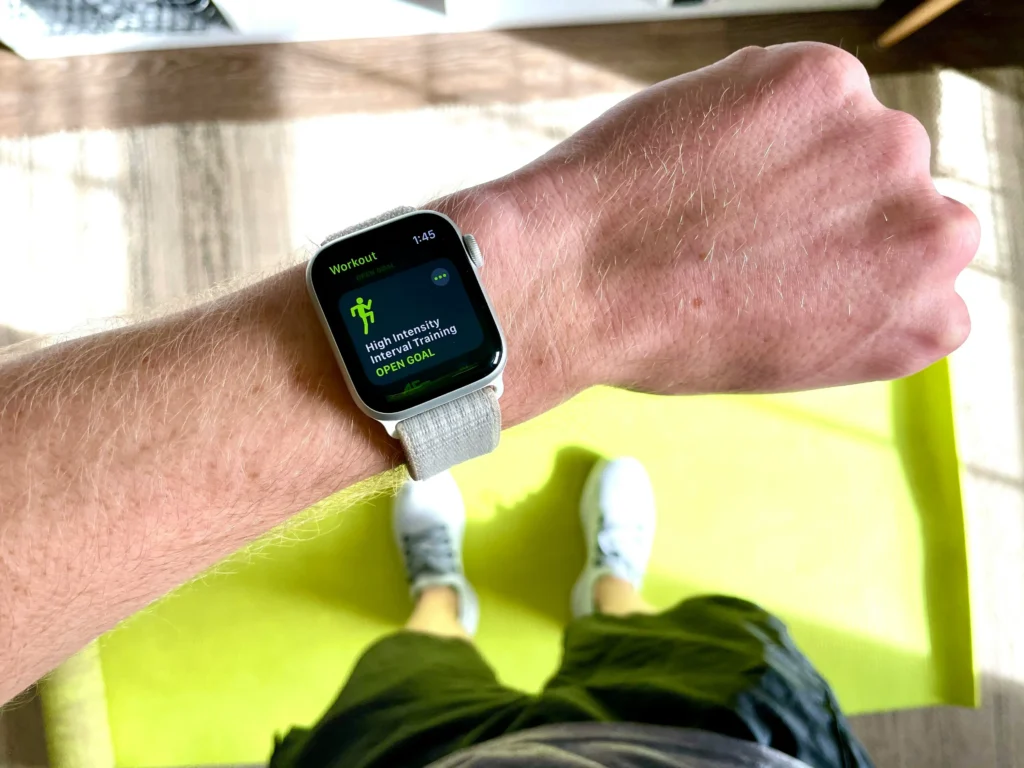
Following a fitness routine can feel like a chore as keeping up with the fitness goal isn’t easy. Between busy schedules, daily distractions, and a lack of motivation. Working out consistently takes a lot of effort.
But imagine what will happen if tech could make your workout session smarter, exciting, and a lot easier to carry on.
Welcome to the era of smart technology, where fitness wearables 2025 are no longer limited to simple step counters.
They have evolved into all-in-one tools with proper guidance, track, and even a coach for you, which can guide you right from your wrist, shoe, or yoga mat.
Top 4 Workout Tech Gadgets For Fitness Tracking
It doesn’t matter if you are starting your fitness journey today or you’re a regular gym person looking for ways to level it up; these gadgets will help you achieve it.
So let’s take a look at the coolest fitness gadgets in 2025:
- Oura Ring Gen 4-Smart Ring:
You must have seen smart watches everywhere, but in 2025, smart rings are the new tech. It’s sleek, stylish with wonderful power. These tiny gadgets track your heart rate, sleep quality, stress levels, and even your recovery status.
Oura Ring Gen 4 or Evie Ring, for example, are designed for everyday wear and blend perfectly with your daily life. No bulk, no screen addiction, just a pure, wearable technology that silently collects the data and gives you insights that you can use.
It’s great for people who want an advanced fitness tracking tool instead of wearing a watch all the time.
- WHOOP (4.0 / MG or 5.0 in 2025)
Data-driven strain, recovery, and sleep metrics are the sole focus of the Whoop, a wrist-worn fitness band without a display.
Whoop, which is based on high-frequency biometric tracking, continuously evaluates stress, resting heart rate, respiratory rate, and heart rate variability to produce daily recovery scores and customized exertion goals.
Its modular battery pack enables seamless wearable charging while on the go, which is especially useful for athletes or users who are dedicated to round-the-clock monitoring.
New features like FDA-approved ECG readings, a physiological “Whoop age” metric, and AI coaching powered by OpenAI are all included in the most recent models, Whoop MG and Whoop 5.0.
- Garmin Venu 3 Smartwatch
In the smartwatch market, the Garmin Venu 3 is still a standout option, especially for consumers who wish to track their health and fitness in-depth without having to pay for pricey ecosystems.
It has an ECG sensor, Pulse Ox (SpO₂), a sharp 1.4″ AMOLED display, a built-in GPS with multi-GNSS support, continuous heart rate and stress tracking, and Garmin’s patented Body Battery energy insight for recovery monitoring.
Its sleep tracking has received a lot of praise; according to Live Science and others, it is one of the best available. It can differentiate between deep, REM, and light sleep and provides actionable recommendations based on Sleep Score and consistent results in testing environments.
The battery typically lasts 11–13 days in watch mode and up to 20+ hours in full-GPS workout mode in real-world use, which is significantly longer than many competitors.
- Peloton Guide: AI-Powered Strength Training Camera
The Peloton Guide is a small, camera-based strength training device that uses HDMI to connect to your TV. With the help of its integrated 12-megapixel wide-angle camera, you can livestream your workout with a Peloton instructor, providing a side-by-side view for tracking and form comparison in real time.
With its AI-powered Movement Tracker and rep-counting features, visual progress indicators, and a “Body Activity” dashboard that shows which muscle groups you’ve recently worked out and recommends new classes to balance your routine, the Guide is made for strength training.
Conclusion:
By 2025, fitness will be more than just tracking steps; it will involve real-time body awareness, recovery optimization, and the democratization of wellness. Fitness technology is now customized to support your individual goals, whether you’re a novice or a high-performance athlete. Examples include recovery-focused smart rings like the Oura and Whoop bands, immersive strength tools like the Peloton Guide, and AI-enabled apps.
These innovations are unique because they combine everyday usability with scientific precision. The fitness technology of 2025 might be just what you need if you’ve had trouble staying motivated, want to work smarter rather than harder, or just adore data-driven wellness.
FAQs
- How to transform yourself in 2025?
Start with an easy walk around the neighborhood instead of promising yourself a marathon. If you need to change your eating habits, pick one healthier option today rather than making drastic changes all at once. The momentum that the change generates is more important than the change’s size. Once you get going, you can build.
- What is the fitness technology in 2025?
By 2025, wearable technology, which is already widely used, will continue to advance with smartwatches, fitness trackers, and gadgets like smart rings that easily connect with health apps. Real-time data is of growing interest to Australians, not only for exercise but also for sleep, stress, and recuperation.

